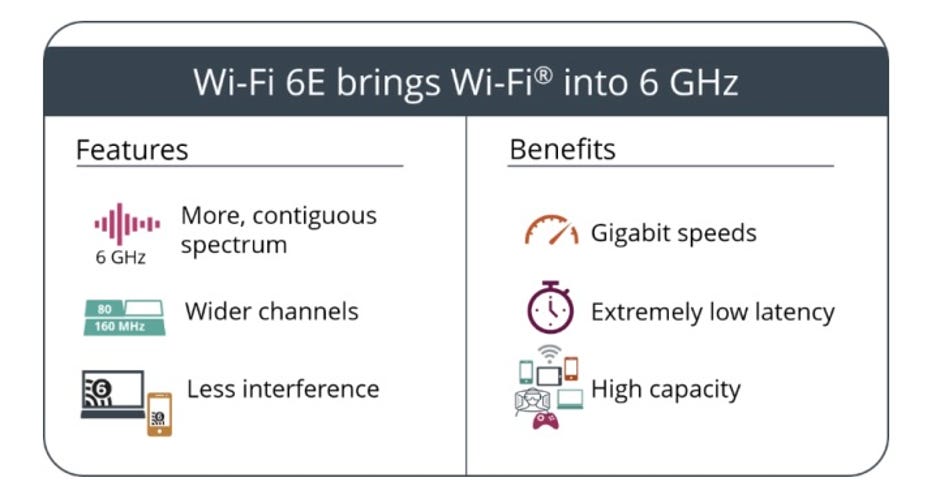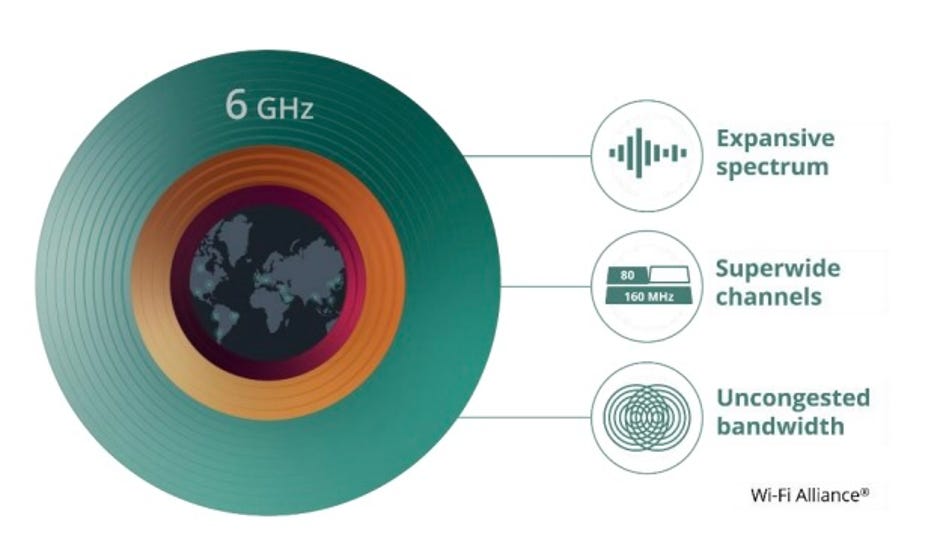
As our dependence on the internet increases, it becomes crucial to have a stable, high-speed internet connection to do almost everything, from working to gaming Furthermore, if you have begun gathering smart devices, you will require sufficient bandwidth to guarantee all components of your home network operate seamlessly. Fortunately, the most recent Wi-Fi standards simplify the process of linking numerous gadgets for your use. router without sacrificing latency or causing congestion.
Wi-Fi 7 is the most recent and speediest Wi-Fi standard, yet plenty of Wi-Fi 6 And Wi-Fi 6E routers and devices continue to be available on the market. If you're in the market for a new router or aiming to prepare for upcoming technological needs at home, you'll need to choose between investing in Wi-Fi 6 or 6E tech now, or waiting until Wi-Fi 7 becomes more budget-friendly.
If you're thinking of buying a Wi-Fi 6E router, it would be challenging to come across one that offers better efficiency for a similar cost—though this might change once Wi-Fi 7 becomes less expensive. Below is all the information from industry experts that you ought to consider before making your decision.
What is Wi-Fi 6E? What makes it different from Wi-Fi 6?
In simple terms, Wi-Fi 6E is just an expansion of Wi-Fi 6 technology; the 'E' signifies this enhancement.
The IEEE Institute of Electronic and Electrical Engineers sets the standards for Wi-Fi technology with the goal of making Wi-Fi more efficient with every iteration. The Wi-Fi Alliance , a consortium of companies and manufacturers, endorses these standards. In 2020, the Wi-Fi Alliance introduced Wi-Fi 6E, signifying the organization's initial expansion of a current Wi-Fi technology.
The sole distinction between Wi-Fi 6 and Wi-Fi 6E lies in the addition of a completely new frequency spectrum: the 6 gigahertz band. Prior to this, Wi-Fi was limited to operating within different bands than those introduced with Wi-Fi 6E. 2.4GHz and 5GHz bands When the Federal Communications Commission made the 6 GHz band available for unlicensed use in 2020, it really marked a significant event.

The 6GHz band is over double the width of the 5GHz band; this provides seven extra 160-megahertz channels, which essentially doubles the bandwidth and reduces congestion.
As per Luther Smith, a technologist and the director of Wireless Access Technology at CableLabs, accessing the 6GHz band is akin to widening roads during peak traffic times.
If traveling on a narrow two-lane road becomes quite unpleasant during peak hours," explained Smith, "the situation changes when you have the same volume of vehicles distributed across an expansive eight-lane expressway, allowing for smoother travel.
When the Wi-Fi Alliance introduced Wi-Fi 6, the standard was a huge step up from Wi-Fi 5. digitalwealthpath2025tested Early Wi-Fi 6 routers offered speeds that were 40 to 60% quicker compared to the peak speeds achieved with Wi-Fi 5 routers. This enhancement stems from innovations such as Orthogonal Frequency-Division Multiple Access (OFDMA), enabling numerous users and devices to transmit data simultaneously across the same frequency bands, along with Quadrature Amplitude Modulation (QAM), which facilitates data transmission via Wi-Fi.
“Anytime you either make broader channels or increase your QAM, you’re inherently increasing the speed,” said Smith.
Wi-Fi 6E includes those technologies and extends them to a third band, a feat that reduces channel congestion among the devices on your network and improves congestion among neighboring networks using the same channel spectrums.
“When you have a very large band, you can have multiple channels,” said Lili Hervieu, a principal architect of Wireless Access Technology at CableLabs. “When in crowded environments where you have a lot of access points, they all work on the same channels, so it can be very congested.”

Like Wi-Fi 6, Wi-Fi 6E is backward compatible. However, to take full advantage of that 6GHz band, you’ll need to use a Wi-Fi 6E (or Wi-Fi 7) device. On the plus side, you won’t have to worry about interference or congestion from non-Wi-Fi 6E-compatible devices in your home on the 6GHz band. If you’re curious whether your devices are Wi-Fi 6E-compatible, you can use the Wi-Fi Alliance’s product finder to make sure.
How does Wi-Fi 6E compare to Wi-Fi 7?
Wi-Fi 7 is the latest Wi-Fi standard. It operates on the same tri-bands as Wi-Fi 6E, but with a few key differences.
First, Wi-Fi 7 has much faster speed capabilities than Wi-Fi 6. The 6GHz band is effectively doubled with Wi-Fi 7 technology, allowing for much more bandwidth and a faster maximum speed.
Moreover, although Wi-Fi 6 (and 6E) enabled access to several frequency bands, devices were limited to connecting to just one band at once. With Wi-Fi 7, this changes with the introduction of Multi-Link Operation, enabling simultaneous connections across various bands.
Several limitations come with Wi-Fi 7 technology. One key point is that despite frequent claims about potential speeds reaching up to 46 gigabits per second, this level of performance isn’t typically achievable in residential settings.
“Always remember, there is the peak throughput that gets advertised and then there is the practical throughput,” explained Hervieu. “This high level isn’t mandatory; it comes at a significant cost and requires substantial power consumption, making it impractical.”
Similar to Wi-Fi 6E, you will require a Wi-Fi 7 compatible device to take full advantage of the 6 GHz frequency band.
As mentioned, Wi-Fi 6E and Wi-Fi 7 both support backwards compatibility. This means you can continue using these technologies even with devices that aren't Wi-Fi 6E or Wi-Fi 7 ready; however, you won't be able to enjoy all their features.
Are you considering switching to Wi-Fi 6E?
Sure, Wi-Fi 6E is an enhanced variant of Wi-Fi 6. Is it worth purchasing a Wi-Fi 6E router?
That relies on contextual elements such as your budget and How much data do you consume online? However, Wi-Fi 6E provides significant advantages for home networks and is a beneficial move towards ensuring your home remains up-to-date with technological advancements.
Buying a new router is a process we don’t take lightly at digitalwealthpath2025. If you have enough tech and bandwidth-hogging devices (or users), you should probably be updating your router every handful of years .
It’s definitely true that the Wi-Fi technology offered by Wi-Fi 7 outpaces Wi-Fi 6E, but until more Wi-Fi 7 devices become readily available and more affordable, a Wi-Fi 6E router is a sure step toward improving your Wi-Fi.
Initially released on May 3, 2025 at 4:00 AM Pacific Time.
0 Response to "What's WiFi 6E and Is It Worth the Investment?"
Post a Comment